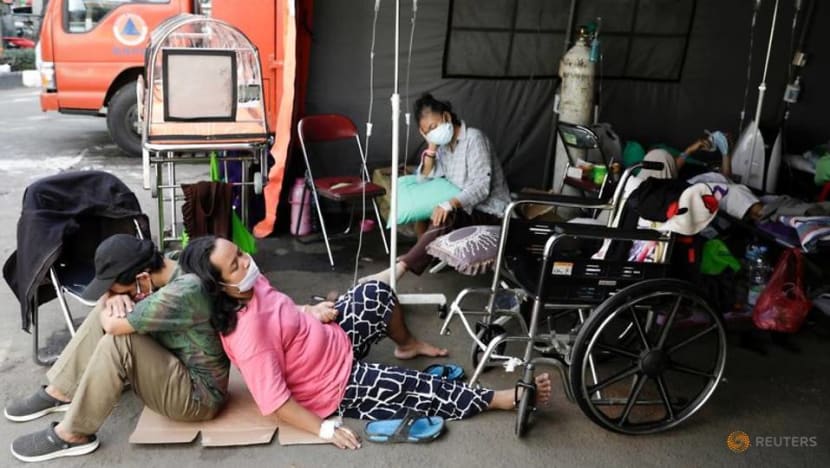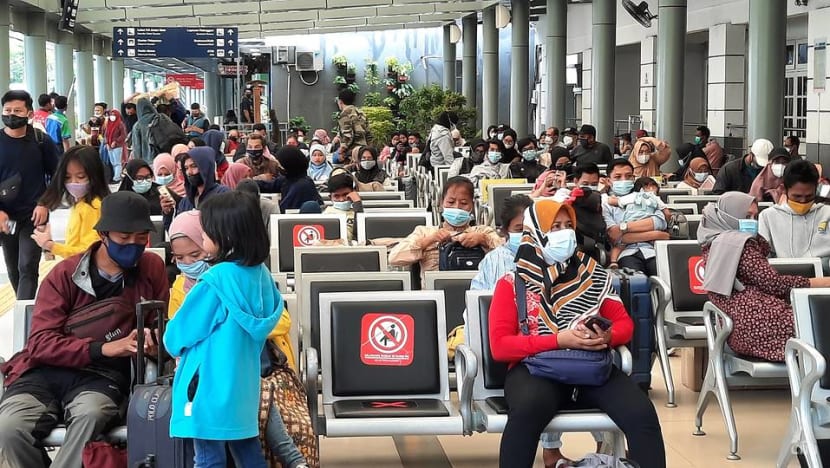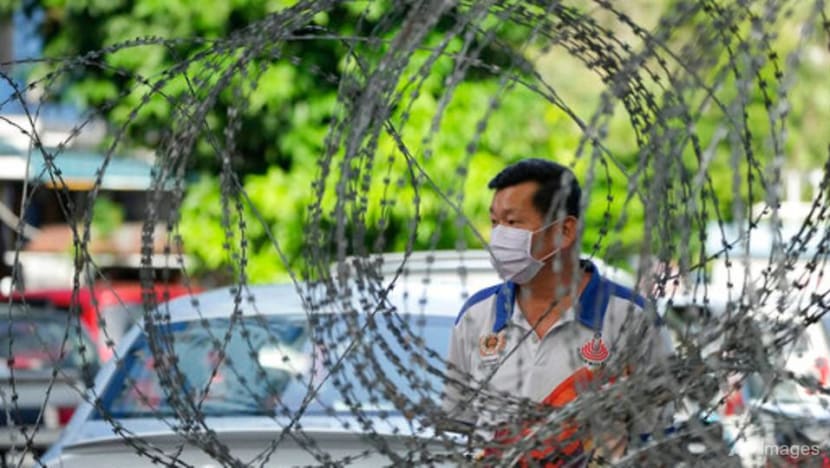Commentary: Indonesia is Asia's new COVID-19 epicentre
The resumption of economic activity and domestic travel contributed to the regional surge in COVID-19 cases, says a researcher.

A patient rests on the floor at a temporary tent outside the emergency ward of a government hospital, amid the COVID-19 pandemic in Bekasi, on the outskirts of Jakarta, Indonesia, on Jun 25, 2021. (File photo: Reuters/Willy Kurniawan)
KUALA LUMPUR: Southeast Asian countries have recorded unprecedented spikes in daily case numbers and deaths during the last several weeks.
In April, Thailand recorded an eight-fold increase in seven-day average daily new cases. The trend in the last few weeks have been worse.
Malaysia’s seven-day average daily new cases per million population more than doubled between May 1 (94.2 per million population) and Jul 11 (254 per million).
With a population nearly ten times that of Malaysia, Indonesia has recorded an almost seven-fold increase for the same parameter from May 1 (18.9 new cases per million) to Jul 11 (127 new cases per million).
READ: More than 11,000 oxygen concentrators to be sent to Indonesia from firms in Singapore amid surge in COVID-19 cases
Indonesia’ daily case numbers for the last few days is breaking records, without a significant increase in test numbers. On Jul 14, Indonesia broke another record of 54,517 new COVID-19 cases.
Indonesia is now considered Asia’s new COVID-19 epicentre, overtaking India. What has prevented Indonesia from showing a similar spike with India during its worst days in terms of incidence rate per million population was simply the country’s low test coverage.
The increase in case numbers has been followed by spikes in deaths as well.
READ: Grappling with 'worst-case scenario', Indonesia faces more COVID-19 pain
WHY CASES ARE INCREASING
Two things contribute to increased COVID-19 cases in several countries in Southeast Asia: Human mobility and activities and the spreading of new coronavirus variants.
The drastic rise of COVID-19 cases in Thailand in April was preceded by increased activities in workplaces that peaked in March.
In Malaysia and Indonesia, most people celebrated Eid in May. Despite government restrictions, people travelled to meet their families (“mudik” in Indonesia or “balik kampong” in Malaysia). We can easily relate the current spikes with the increase in mobility.

Additionally, the governments' efforts to spur some form of economic recovery following the 2020 economic downturn has also been seen as a factor behind the increase in cases.
In Malaysia, for instance, more than 50 per cent of new cases between February and April were found in workplaces, among construction and factory workers.
It’s also clear that the new SARS-CoV-2 variants of concern are significant factors in the unprecedented spike. The Delta variant, for example, has shown transmission capacity and immune evasiveness never seen before for a coronavirus.
This means there is an increased risk the Delta variant will wreak havoc on an otherwise healthy immune system. What happened in India was a clear sign of this.
All four variants of concern (Alpha, Beta, Gamma and Delta) have been found in Southeast Asia, mainly in Malaysia, Thailand, Philippines and Indonesia.
READ: Commentary: In Singapore’s bold plan to reopen, these are the hard-nosed decisions society must make
READ: Commentary: Malaysia’s white flag movement a symbol of hope and helping each other
ACCOMPANYING INCREASE IN DEATHS
A sharp increase in the death toll has accompanied the rising COVID-19 cases.
The weekly average of daily new deaths in Thailand recorded over a 100-fold increase over the period from Apr 1 (less than 0.01 deaths per million people) to Jul 13 (1.05 deaths per million people).
Malaysia recorded a 24-fold increase (0.13 deaths per million on Apr 1 compared to 3.13 deaths per million on Jul 13) for the same parameters and period. Although Indonesia has recorded a seven-fold increase for the same period (0.51 versus 3.32), the country’s death toll is now the worst in the region.
As of Jul 13, Indonesia’s case fatality rate with 2.61 deaths for every 100 confirmed cases of COVID-19 remains the highest in Southeast Asia (Malaysia 0.75 per cent; Thailand 0.81 per cent).
Last month, Malaysians showed an 11-fold higher risk of being infected with COVID-19 than Indonesians (21.3 new cases per million in Indonesia; 236 new cases per million in Malaysia).

In a mere one month, this gap is closing to only two-fold as of Jul 11 (127 new cases per million in Indonesia, 254 new cases per million in Malaysia). This has happened amidst efforts to increase testing capacity in Indonesia.
KEY STRATEGIES TO CONTROLLING THE PANDEMIC
The United Kingdom and United States experience shows that vaccination is the most effective strategy in stopping the pandemic.
Even though both countries saw a recent spike in cases, with Delta being the dominant variant there, we do not see a corresponding spike in hospitalisations and deaths, as seen in Southeast Asia with lower vaccination coverage.
The United Kingdom and the United States experienced a surge of cases, hospitalisations and deaths in early 2021. Their numbers have significantly lowered. As of Jul 12, 51.6 per cent of the UK’s population and 47.7 per cent of the US’s population have been fully vaccinated.
On May 28, the US Center for Disease Control (CDC) issued bold recommendations for those who have been fully vaccinated. The agency has decided to remove the obligation to wear masks, social distancing and post-international-travel quarantine to those with complete vaccinations.
READ: Commentary: Vietnam's attitude towards Chinese vaccines is very telling
Test-Trace-Isolate (TTI) remains the key strategy to controlling the pandemic.
The principle of this effort is to detect as many cases as possible as quickly as possible, preventing them from becoming sources of virus spread. Upon detection, patients must be separated from the general public and given medical care if necessary.
The government also has to meet WHO’s 5 per cent maximum positivity rate standard, used as a marker of adequacy in test coverage. If the positivity rate is still above 5 per cent, the number of tests must be increased.
And until the majority of the population gets vaccinated, we should continue to wash hands, wear masks, maintain distance, avoid crowds and limit travel to control the pandemic.
Teguh Haryo Sasongko is Deputy Director at the Center for Research Excellence, Perdana University. This commentary first appeared on The Conversation.










